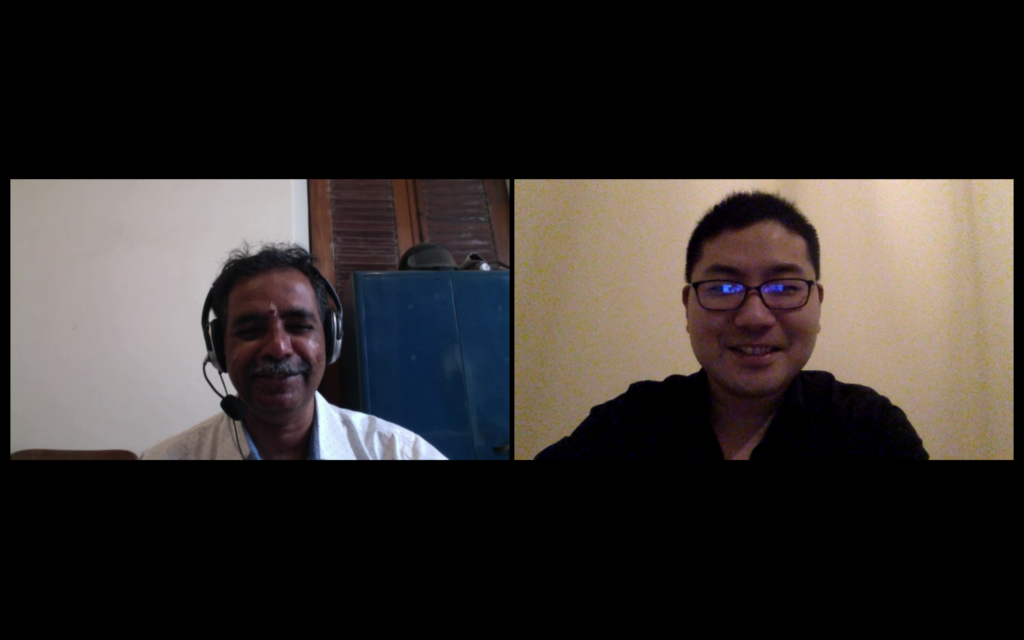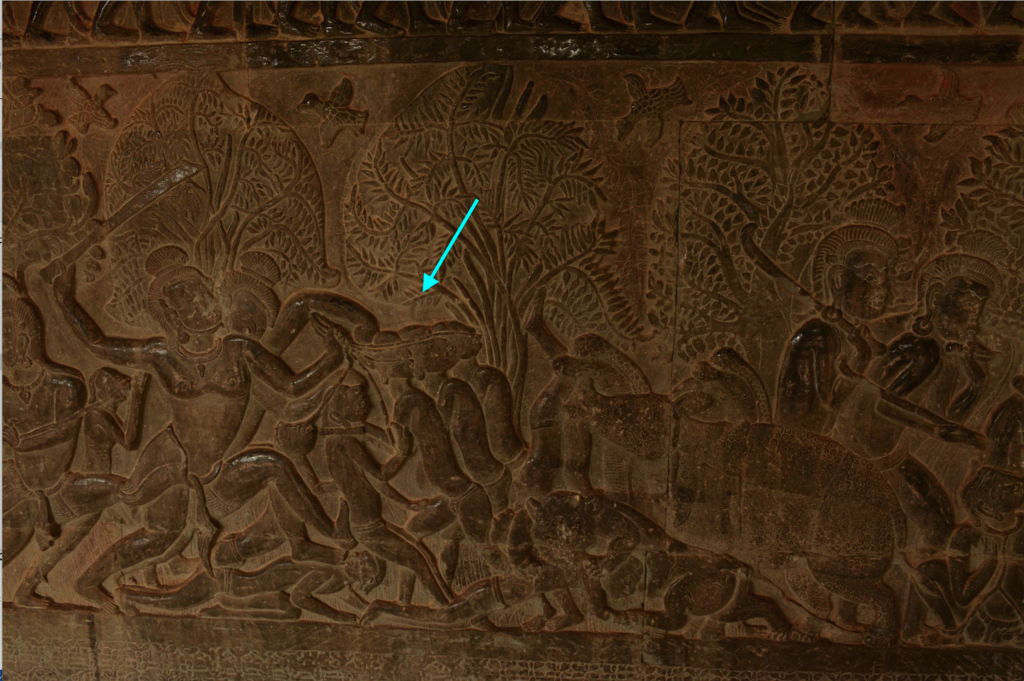
Since April 2020, R. Sathyanarayana (EFEO, Pondicherry) and Kenji Takahashi (University of Naples “L’Orientale”) have been working together to edit the 7th chapter of the Śivadharmottara describing the journey to hell after death and the cruel torments that sinners suffer therein.

Although the chapter’s topic may sound gloomy, for Kenji, editing this part of the text with Prof. Sathyanarayana has proved to be a unique experience. During the regular sessions, we proceed very slowly, paying full attention to every detail of the text. As Prof. Sathyanarayana is profoundly cultivated not only in western philology but also in Indian traditional learning, Kenji finds discussions with him an excellent opportunity for him to absorb the way an Indian intellectual understands the Sanskrit text and to know how ancient Indian wisdom has been transmitted to date.
Our session is not limited to a philological probe into the text. The 7th chapter of the Śivadharmottara, along with other Indian sources, provides a motif for the scenes of hell depicted in the bas-relief gallery of Angkor Wat temple in Cambodia (12th century) built by King Suryavarman, as demonstrated by Prof. Sathyanaraya’s recent paper (2019. “Hell depicted in Mahābhārata as in the bas-relief of Angkor Wat temple: A study in contrast with Śaiva sources”). We also compare these reliefs with the description of hell in the Śivadharmottara, with a view to understanding the transregional influence our text exercised in the medieval world history.
Let me show an example from our recent findings. Śivadharmottara 7.66ab reads:
nāsāviddhāś ca rajjvā ca samākṛṣyanti cāpare /
“And others, being pierced in the nose by a rope, are drawn [by Yama’s envoys].”

In this picture, you can find three men are dragged by a violent officer of Yama (the god of hell), with their nose pierced by a rope. The dynamic posture of the Yama’s envoy makes a vivid contrast with the submissive gait of sinners.
In this way, our investigation into hell described in the Śivadharmottara takes us on a journey from text to art, from South Asia to Cambodia.
Studying the 7th chapter of the Śivadharmottara with Prof. Sathyanarayana is opening a new horizon for Kenji’s research. Last but not least, the regular online sessions with Prof. Sathyanarayana, which usually start with relaxed conversations about our daily life, bring comfort to Kenji during this challenging period of COVID-19.
